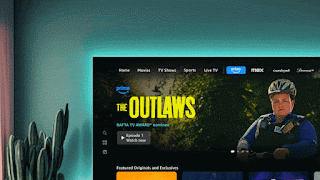 |
| Photo: Flipkart |
Motorola has officially launched its latest mid-range smartphone, the Motorola Edge 50, in the Indian market. The device boasts several notable features, including the advanced Snapdragon 7 Gen 1 chipset, a stunning 6.67-inch pOLED display with a 120Hz refresh rate, a versatile triple rear camera system anchored by a 50MP sensor, and support for rapid 67W fast charging. The Motorola Edge 50 is poised to enter a competitive market segment, contending with devices such as the Nothing Phone (2a) Plus, OnePlus Nord 4, and Realme 13 Pro. Customers in India will be able to purchase the Motorola Edge 50 through the Flipkart e-commerce platform.
Motorola Edge 50: Pricing and Availability in India
The Motorola Edge 50 is introduced in a single storage configuration consisting of 8GB of RAM and 256GB of internal storage. The device carries a price tag of Rs 27,999 in the Indian market. Regarding color options, customers can choose between Jungle Green and Pantone Peach Fuzz, both of which feature a vegan leather back. Additionally, a Koala Grey color variant with a vegan suede back is available.
The Motorola Edge 50 will go on sale in India on August 8th at 12pm IST. It will be available for purchase through Flipkart and Motorola's official website, motorola.in. Buyers who utilize Axis Bank credit cards will receive an instant discount of Rs 2,000 on their purchase.
Motorola Edge 50 Specifications and Features
The Motorola Edge 50 showcases a remarkable 6.67-inch pOLED curved display with a captivating 120Hz refresh rate, providing smooth and responsive visuals. The display also boasts an impressive peak brightness of 1,900 nits and is fortified with Corning Gorilla Glass 5 for enhanced durability. At its core, the smartphone is driven by the efficient Qualcomm Snapdragon 7 Gen 1 chipset, paired with 8GB of RAM and 256GB of storage. Motorola has optimized the software experience by pre-loading the device with Android 14 based Hello UI, ensuring a modern and intuitive user interface. Furthermore, customers can expect two years of software updates and three years of security patches to keep their device up to date.
In terms of photography, the Motorola Edge 50 is equipped with a versatile triple rear camera system. The primary sensor is a 50MP Sony-Lytia 700C camera, accompanied by a 10MP 3x telephoto camera and a 13MP ultra-wide camera, offering a range of shooting options. For capturing selfies and video calls, the smartphone features a 13MP front-facing camera.
Powering the Motorola Edge 50 is a robust 5,000 mAh battery that supports rapid 68W fast charging, enabling quick replenishment of the device's battery life. Additionally, the smartphone offers 15W wireless charging and 5W reverse wireless charging, providing convenient charging options. The Motorola Edge 50 also boasts immersive audio experiences with Dolby Atmos and Hi-Res audio support. Furthermore, it incorporates an in-display fingerprint sensor for secure biometric authentication and benefits from an IP68 rating, signifying its resistance to dust and water.







